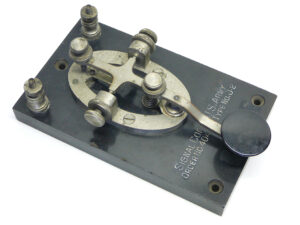The Early Days of Ham Radio

Ham radio, also known as amateur radio, has come a long way since its inception. Back in the early days, ham radio operators communicated using Morse code, a system of dots and dashes that were transmitted over the airwaves. This required a certain level of skill and dedication, as operators had to learn the code and master the art of sending and receiving messages.
However, as technology advanced, so did ham radio. The introduction of voice communication in the 20th century brought a new level of convenience and accessibility to the hobby. This allowed for real-time conversations between operators, making ham radio a more interactive and engaging experience.
The Rise of High-Tech Ham Rigs
Today, ham radio enthusiasts have access to a wide range of high-tech gear and rigs that offer advanced features and capabilities. These modern ham rigs are a far cry from the simple radios of the past. They are equipped with digital signal processing, built-in automatic antenna tuners, and sophisticated filtering systems to enhance the overall performance.
One of the most notable advancements in ham radio technology is the integration of computer systems. Many modern rigs can be connected to a computer interface, allowing operators to leverage software applications for digital modes of communication. This opens up a whole new world of possibilities, from sending emails over the airwaves to participating in digital voice chats.
The Global Popularity of Ham Radio
Despite the rise of smartphones and the internet, ham radio continues to be a popular hobby worldwide. In fact, the number of licensed ham radio operators is on the rise, with enthusiasts from all walks of life joining the community.
One of the reasons for its enduring popularity is the sense of community that ham radio provides. Operators can connect with others from around the world, forming friendships and sharing experiences. Ham radio also offers a unique opportunity to engage in emergency communication during times of crisis, when traditional communication channels may be compromised.
Additionally, ham radio has been seen as a valuable learning tool, especially in the field of STEM (Science, Technology, Engineering, and Mathematics) education. Many schools and universities have incorporated ham radio into their curriculum, as it offers hands-on experience in electronics, physics, and communication.
